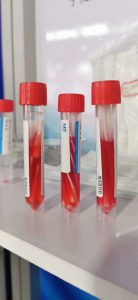Le nouveau modèle révèle que les restaurants sont “points chauds” en covide-19. Dans les villes du monde, Les épidémies de virus se produisent souvent dans des zones surpeuplées telles que les restaurants, Cafés et gymnases. Maintenant, La carte des activités de la foule dessinée par les données de téléphone mobile montre que la plupart des infections à Covid-19 dans les villes américaines peuvent être liées à ces lieux. Ce nouveau modèle, published in Nature on November 10th, also found that reducing the occupancy rate of venues can significantly reduce the number of infected people.
In order to predict how people’s activities affect virus transmission, the research team input anonymous location data from mobile phone application into a simple epidemiological model that can estimate the speed of disease transmission. The location data are collected by SafeGraph Company in Denver, Colorado, and these data come from Chicago, new york, Philadelphia and other 10 largest cities in the United States. The data depicts the maps of the residents in the above cities who went in and out of 57,000 blocks to restaurants, churches, gymnases, hotels, auto shops and sporting goods stores in the two months from March.
When the research team compared the predicted number of infected people in Chicago residential areas from March 8 to April 15 with the officially recorded number of infected people in these communities one month later, they found that the model accurately predicted the number of confirmed cases. “We can accurately estimate the contact network between 100 million people every hour.” Jure Leskovec, a member of the research team, said.
Then, the research team used the model to simulate different scenarios, such as reopening some venues while keeping other venues closed. They found that the number of infected people increased the most when restaurants were opened, followed by gyms, cafes, hotels and motels. If all the above venues are opened, the model predicts that there will be 3.3 million new infection cases. toutefois, if the space occupancy rate of the above places is limited to 30%, the number of newly infected people can be reduced to 1.1 million; If the space occupancy rate is limited to 20%, the new infection cases will be reduced by more than 80% to about 650,000 cas. Christopher Dye, an epidemiologist at Oxford University in England, said that the flow model needs to be verified with real data. “This is an epidemiological hypothesis to be verified. But this is undoubtedly a hypothesis worth testing. ”
 sampling and swab testing
sampling and swab testing

















